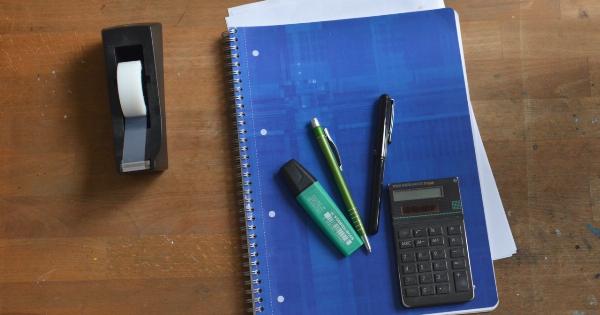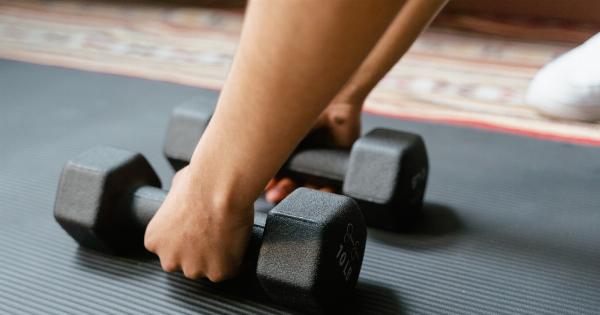Stress is a common problem that most people experience at some point in their lives.
Whether it is due to work-related pressures, personal issues, or simply the demands of everyday life, stress can have a negative impact on our mental and physical well-being. It is important to find ways to manage and reduce stress levels in order to maintain a healthy and balanced lifestyle. While there are several options available, one go-to solution for stress reduction stands out from the rest.
The benefits of exercise for stress reduction
Exercise is not only beneficial for physical health but can also do wonders for our mental well-being. Engaging in regular physical activity has been proven to reduce stress levels and promote relaxation.
When we exercise, our bodies release endorphins, which are known as “feel-good” hormones. These endorphins act as natural painkillers and mood elevators, helping to alleviate stress and improve our overall mood.
In addition to the release of endorphins, exercise also helps to reduce levels of cortisol, the primary stress hormone in our bodies.
High levels of cortisol have been linked to weight gain, compromised immune function, and increased risk of various diseases. By engaging in regular exercise, we can effectively lower cortisol levels and minimize the negative effects of stress.
Types of exercise for stress reduction
There are various types of exercise that can help to reduce stress levels. The key is to find an activity that you enjoy and can incorporate into your regular routine. Here are a few options:.
1. Cardiovascular exercises
Cardiovascular exercises, such as running, swimming, or cycling, are great for stress reduction. These activities get your heart rate up, increase blood flow to the brain, and help you blow off some steam.
You can start with just a few minutes of cardio and gradually increase the duration and intensity as your fitness improves.
2. Yoga and meditation
Yoga and meditation are forms of exercise that focus on both the body and the mind. They involve gentle stretching, deep breathing, and relaxation techniques, all of which help to calm the mind and release tension from the body.
Regular practice of yoga and meditation can significantly reduce stress and improve overall well-being.
3. Strength training
Strength training exercises, such as lifting weights or using resistance bands, not only help to build muscle but also provide a great outlet for stress.
When we engage in strength training, we can channel our energy into something positive and feel empowered by the progress we make. The physical exertion involved in these exercises also leads to the release of endorphins, further enhancing the stress reduction benefits.
4. Team sports
Participating in team sports is not only a great way to stay fit but also a fantastic stress reliever. The camaraderie and friendly competition help to take your mind off stressors and allow you to have fun while being active.
Whether it’s joining a local soccer league or playing casual basketball with friends, team sports provide social interaction and physical exertion, both of which contribute to stress reduction.
5. Mind-body exercises
Mind-body exercises, such as Tai Chi or Qi Gong, combine physical movements with mental focus and deep breathing. These exercises promote mindfulness and relaxation, helping to reduce stress and improve overall well-being.
Mind-body exercises are particularly beneficial for individuals who prefer a more gentle and low-impact form of exercise.
Incorporating exercise into your routine
Now that you understand the benefits of exercise for stress reduction, it’s important to find ways to incorporate it into your daily routine. Here are some tips to help you get started:.
1. Set realistic goals
Start small and gradually increase the duration and intensity of your exercise sessions. Setting realistic goals will help you stay motivated and prevent burnout or injury.
2. Find activities you enjoy
Explore different types of exercise and find activities that you genuinely enjoy and look forward to. This will make it easier to stick to your routine and derive maximum stress reduction benefits.
3. Schedule exercise sessions
Make exercise a priority by scheduling dedicated time for it in your daily or weekly calendar. Treat it as an important appointment that you cannot miss.
4. Break it up
If finding a continuous block of time for exercise seems challenging, try breaking it up into shorter sessions throughout the day. For example, you can take a brisk walk during your lunch break and do strength training exercises in the evening.
5. Make it social
Exercise with a friend or join a group class to make it a more enjoyable and social experience. Having a workout buddy can provide motivation and accountability.
Conclusion
Exercise is a powerful tool for stress reduction that offers a wide range of physical and mental benefits.
Whether you prefer cardiovascular activities, mind-body exercises, strength training, or team sports, finding the right form of exercise for you can significantly improve your overall well-being and help you better manage and reduce stress levels. Make exercise a regular part of your routine, set realistic goals, and enjoy the many positive effects it can have on your mental and physical health.































